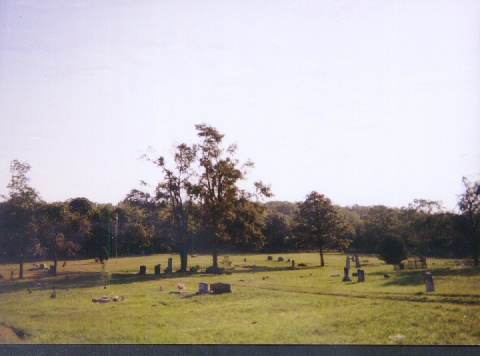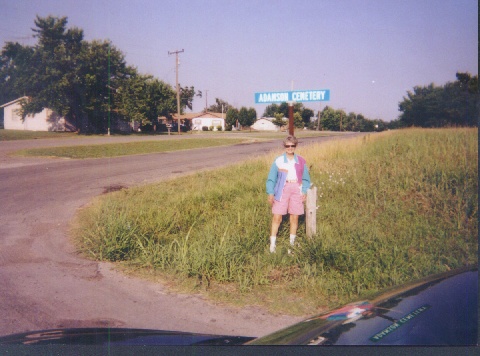 ......Adamson
Cemetery
......Adamson
Cemetery
Location:
Section 7, T. 5 N., R. 17 E.,
10 miles east of McAlester;
6 miles North of Hartshorne.
Named for Peter Adamson, mine owner.
Post Office March 1, 1906 - Unknown
Railroads:
Missouri, Kansas & Texas Railroad (Katy),
abandoned 1950;
Choctaw, Oklahoma & Gulf Railroad
(Rock Island), abandoned 1902
Adamson developed first as a coal mining camp
then
later in the early 1900's
as a town. Within the four square mile area
which it served as the trading
center were fifteen mines, four of which were
considered
major producers. The
town reached its peak during World War I, when coal
formed the chief source
of energy for railroads, electricity generating, and
general manufacturing
activities. At that time the population in the
area was estimated in excess of
5,500 persons, including the 700 who lived in
Adamson.
The Rock Island &
Katy railroads both built tracks into the community
to serve the mines.
From 1913 to 1919 Adamson was known as a "live
town."
There was fighting
and dancing, Choc beer drinking, & living &
marriage among the
conglomerate of peoples who had moved in from
various
parts of the world.
The mines were working twenty-four hours a day, the
four major mines using
about two hundred men each. Railroads carried
out trainloads of coal daily.
Money flowed freely. Holidays of a dozen different
European Countries were
celebrated. One merchant of the time recorded:
"We had a busy city then.
It was gay & happy & something happened all
of the time." All of the mines
in the Adamson area were slope mines, & most had
a dip of about 35 degrees
northward. Coal was taken from both the McAlester
and Hartshorne outcrops.
The deepest bed was the Hartshorne, which was
workable
throughout most of
the area. It averaged about four feet in
thickness.
The McAlester bed,
approximately one thousand feet above the
Hartshorne,
varied in thickness
from three feet to a few places five feet. On
September 4, 1914, one of the
major mine disasters in Oklahoma occurred at Mine
No. 1, one fourth mile
south of the principle business district of
Adamson.
At about 3:30 p. m. a
miner reported that he had heard a cracking noise
in the mine. All men were
ordered out of he mine at once. The trips
carried
the men up the sixteen-
hundred-foot incline, set on a 45 degree angle, to
the tenth level about eight
hundred feet below the surface. All were up
to this level except fourteen
from the bottom room. The underground tunnels
& rooms of the mine,
almost without warning, began to "squeeze" &
collapse.
"Increasing cracking
noises, a groan from the earth, and a splintering
of supports foretold the
carnage." Several stated there was on great noise
like an explosion far beneath
the ground. On the surface the earth dropped
about eight to ten feet. The
fourteen men were buried alive. Rescue or even
recovery of the bodies was
impossible.
Today about ten small homes, largely occupied by
retired
individuals, remain
north of the old main street. Two small
grocery
stores remain, but much of
their business comes from visitors to nearby Lake
Eufaula. All the mines are
now closed & filled with water. About one
quarter mile south of the former
business area the land between mine pillars
continues
to settle gradually, &
a series of somewhat elongated ponds is
forming.
Water flowing from the old
mines now presents a problem to the conservationists
of the area. The water
is highly mineralized, thereby contaminating the
streams
into which it flows
& killing large numbers of fish.
One person now living in the area stated that
Adamson
was a ghost town with
fourteen ghosts watching over it.
**********************
From the book by John W. Morris, Ghost Towns of
Oklahoma (Norman: University of OK Press, 1977).
Published in KARD, Vol. 8, page 21 & 22.
Photographs in the Town of Adamson
 ........Street
to Cemetery
........Street
to Cemetery
END